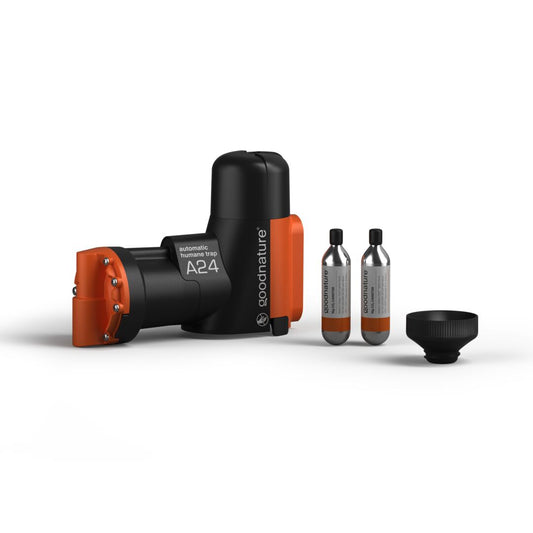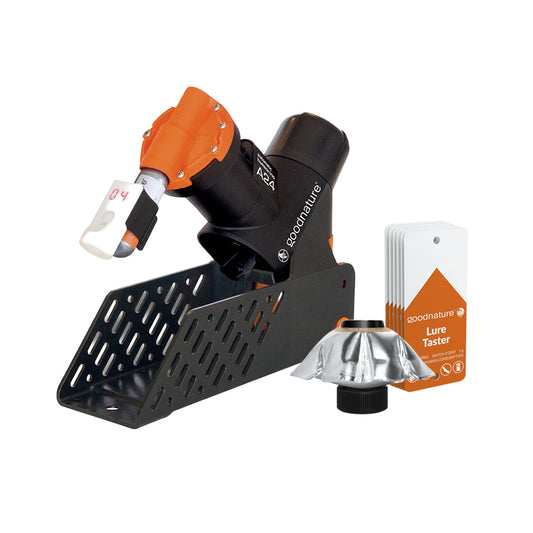
Anyone who's had to deal with a rodent infestation can attest to their tenacity. Mice and rats seem able to thrive under conditions that no other species could put up with. In fact, it often seems like we find mice and rats wherever life can exist. And there's some truth to that idea.
We see mice and rats on every continent other than Antarctica. In fact, they're the most abundant form of mammalian life in the world. It's little wonder that we constantly need to come up with new solutions to manage them. If humans are the most successful mammal on earth, then rats and mice are in competition for second place.
Of course we also find a lot of variation on a location by location basis. North America has seen an explosion of diversity in its rodent population. This has often been quite good for the rodents while quite bad for humans.
Native Species and Their Cousins From Overseas
North America boasts over seventy native species of rodents, but anyone who's had to deal with an infestation is probably familiar with one of three individual species. These are the black rat (rattus rattus), Norway rat (Rattus norvegicus) and house mouse (Mus musculus).
These three species have a lot in common. Most importantly, they're all fairly recent additions to the continent. In fact, these rodents are often known as "old world" mice and rats. These species hitched a ride with Europeans who ventured out to start a new life. Interestingly enough it essentially selected for rodents who have a special affinity for humans. If you see a member of these three species in the US than you can rest assured that they're all descended from parents who realized humans on a boat would have a steady supply of food.

Species With a Very Different Idea of the Perfect Home
The mice types and rat types native to North America tend to prefer forests and open plains. That's not to say that they'll turn down a free meal if humans are around, but unlike the old world rodents they're not as likely to actively search out human habitats.
The old-world rat types typically search out the extremes of a human habitat. The black rats usually try to go as high as they can in a home. If you have an attic then you've seen their preferred habitat. Meanwhile the Norway rat typically heads out in the other direction. They'll typically be found in basements, but they're also attracted to other underground buildings. They're even a common sight in sewers. A love of both swimming and the underground makes sewers a natural choice for these rat types.
Additionally, the old-world mice types aren't as focused on altitude. They'll instead focus on two elements. The first point they look for is a solid food source. If a house mouse can set themselves up near your kitchen or garbage then they'll be a happy rodent. However, he's also focused on staying out of sight. This make garbage cans outside of your home a little less appealing. Instead they'll try to find or create a hidden nest somewhere near your home's food supply. Again, kitchens and open trash cans are a favorite of these mice types.
New-world mice and rats will usually be more hesitant to take up residence within your home. That's not to say it doesn't happen. But animals like the marsh rat (Oryzomys palustris) have preferences which don't really match up with the average home. For example, the marsh rat would only want to move into a home which had enough standing water to feel like the wetlands.
A Rodent’s Home Within a Home

All three of the old-world rodents really make themselves at home once they've set themselves up inside your house. They'll typically try to make a nest of some sort. And each of the three species tries for something slightly different than the others.
The black rat will typically use all of the available resources in an attic to make a nest. They are usually in luck as attics tend to have a lot of stray material for insulation or storage. Their cousin, the Norway rat, isn't so lucky. If they're in a basement then it's going to be a little harder to find material to build a nest. However, they will often find unprotected corners within a basement that don't have proper covering. If they can find dirt or walls made of softer material than they might try to make their own little burrow
House mice will typically use anything they can find to make a nest. Again, the most important part of their nest is how unobtrusive it is. What a nest is made out of is less important to the mouse than how out of sight it is.
The various new-world rodents have similar behavior but different habitats. Packrats (Neotoma) typically gather up twigs and sticks to make their nest. However, they acquired their name for good reason. They're not as fond of humans as their old-world cousins, but they'll still try to make off with anything that catches their fancy. These rodents are very fond of bright or shiny items. As such they may well add coins or even jewelry to their nests if they come across humans.
Marsh rats live up to their name through their love of the wetlands. They typically prefer damp areas where they can continually return to the water. These semi-aquatic rodents will usually make themselves at home in areas with heavy grasses or sedges.
How Rodents Plan Their Evenings
Old and new-world rats and mice do have one important point in common. The vast majority of them will wait until night time to look for food. The exact nature of their scavenging will vary by both species and environment. However, in general if it's night and you have your lights off then any invading rodents will start to look for food.
The fact that they wait until you're asleep also makes it harder to notice rodents in your home. However, there are some signs to watch out for. One of the most important is holes in your packaged food containers. A box of cereal with a hole chewed through it is a classic sign of rodent infestation.
It's also important to keep a rodent's preferences in mind when looking at your yard. Remember that house mice in particular like to stay out of sight. As such, they'll often find themselves attracted to overgrown grass. But these rodents will seldom stop at your yard. Once they've rested amid the tall grass of a yard they'll quickly realize how appealing your house is. Keeping food, especially pet food, indoors will help make your home less appealing to rodents. And keeping the grass in your yard trimmed and hiding spaces sparse will make it less appealing for rodents.

Ensuring Mice and Rats Find a Home of Their Own
It's also important to note that rodent problems escalate at a rapid pace. Old and new-world mice and rats all produce offspring fairly quickly. If you notice them in your house it's best to act before they have a chance to start a family. If you're concerned about using poisons around your family and pets, an automatic rat & mouse trap is a safe, non-toxic solution.





